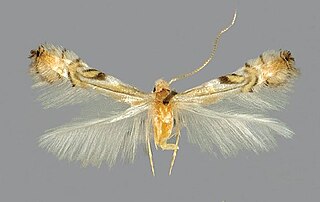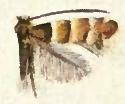
Saturnia pavonia, the small emperor moth, is a moth of the family Saturniidae. It was first described by Carl Linnaeus in his 1758 10th edition of Systema Naturae. Sometimes, the incorrect genus name Pavonia is still used for this species. This moth occurs throughout the Palearctic region and is the only member of its family to be found in the British Isles, where it is usually called simply the emperor moth.

Schinus is a genus of flowering trees and tall shrubs in the sumac family, Anacardiaceae. Members of the genus are commonly known as pepper trees. The Peruvian pepper tree is the source of the spice known as pink peppercorn.
Pepper tree is a common name for several plants and may refer to:

Schinus terebinthifolia is a species of flowering plant in the cashew family, Anacardiaceae, that is native to subtropical and tropical South America. Common names include Brazilian peppertree, aroeira, rose pepper, broadleaved pepper tree, wilelaiki, Christmasberry tree and Florida holly. The species name has been very commonly misspelled as ‘terebinthifolius’.

The Pergidae are a moderate-sized family of sawflies occurring in the Western Hemisphere and the Australasian Region. The Pergidae are, with almost 450 described species, the third-largest family of Symphyta after the Tenthredinidae and the Argidae. Morphologically, most pergids are typically sawfly-like, but the form of the antennae varies considerably in number of segments and from simple to serrate and pectinate or even bipectinate. Sexual dimorphism is common and reflected in differences in type of antennae, colour, and size. Included are some of the few known apterous sawflies, those of the genus Cladomacra occurring in Papua New Guinea and Indonesia, and a species with brachypterous females, Clarissa tasbates, in Tasmania.

Gracillariidae is an important family of insects in the order Lepidoptera and the principal family of leaf miners that includes several economic, horticultural or recently invasive pest species such as the horse-chestnut leaf miner, Cameraria ohridella.

A pink peppercorn is a dried berry referring to three different species; the traditional Baies rose plant Euonymus phellomanus, the shrub Schinus molle, commonly known as the Peruvian peppertree, and the Schinus terebinthifolia.

Schinus molle is an evergreen tree that grows to 15 meters. It is native to an area from the Peruvian Andes to southern Brazil. The bright pink fruits of Schinus molle are often sold as "pink peppercorns" although S. molle is unrelated to black pepper. The word molle in Schinus molle comes from mulli, the Quechua word for the tree. The tree is host to the pepper-tree moth, Bombycomorpha bifascia.
100 of the World's Worst Invasive Alien Species is a list of invasive species compiled in 2000 from the Global Invasive Species Database, a database of invasive species around the world. The database is run by the Invasive Species Specialist Group (ISSG) of the International Union for Conservation of Nature (IUCN). The ISSG acknowledges that it is "very difficult to identify 100 invasive species from around the world that really are 'worse' than any others. ... Absence from the list does not imply that a species poses a lesser threat." In 2013, the ISSG updated their list to supersede the recently eradicated † rinderpest virus, and a few genus and species names were altered.

Epicephala is a genus of moths in the family Gracillariidae.

Phyllocnistis is a genus of moths in the family Gracillariidae.

Chrysaster ostensackenella is a moth of the family Gracillariidae. It is known from Ontario, Québec and Nova Scotia in Canada, and the United States. It has also been recorded in 2015 from China and in 2017 from Korea, and in 2022 from Central Italy.

Cremastobombycia ignota is a moth of the family Gracillariidae. It is known from Illinois, Texas, Kentucky, Maine, New York, Massachusetts, Washington and Ohio in the United States.

Caloptilia rhoifoliella is a moth of the family Gracillariidae. It is known from Bermuda, Canada, and the United States.
Eucosmophora schinusivora is a moth of the family Gracillariidae. It is found in Paraná, Brazil.
Marmara habecki is a moth of the family Gracillariidae. It is found in Florida, United States.
Caloptilia schinusifolia is a moth of the family Gracillariidae. It is found in Rio de Janeiro, Brazil.

Schinus polygama, the Hardee peppertree or Chilean pepper tree, is a species of plant in the family Anacardiaceae native to Argentina and Chile and naturalized in California.

Gracillariinae are a subfamily of moths which was described by Henry Tibbats Stainton in 1854.
Vihualpenia is a genus of moths in the family Gracillariidae. It contains only one species, Vihualpenia lithraeophaga, which is found in southern central Chile.












